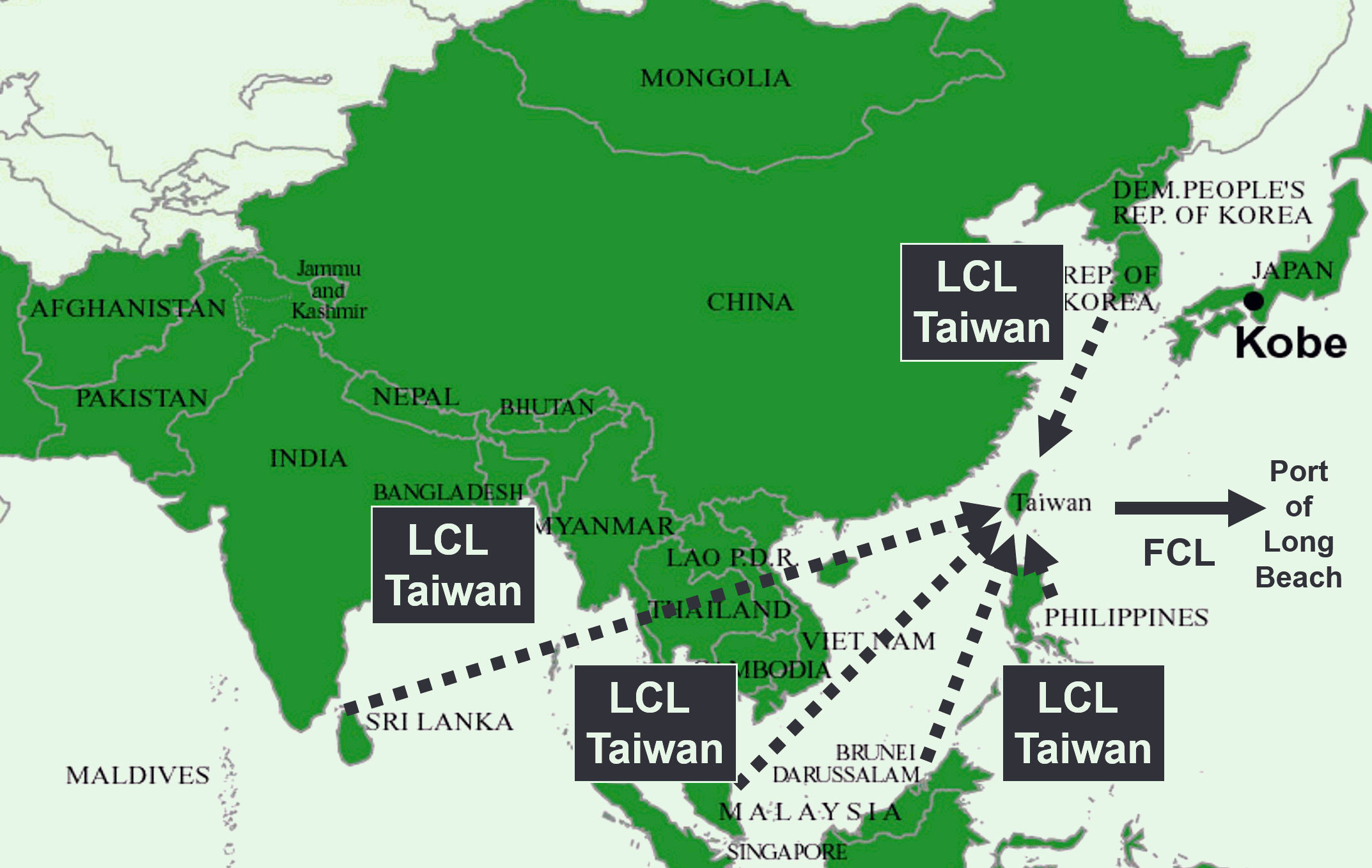Transportation Consolidation
Scheduling requirements are becoming increasingly more complex as more and more consignees consolidate and schedule inbound deliveries. Intelligent transportation management systems should reveal and suggest opportunities for inbound and outbound consolidation.
An example inbound consolidation program for a major retailer in the U.S. bringing goods in from the Asia-Pacific is illustrated in the figure. Inbound consolidation programs yield lower transportation rates over a large portion of the length of the major transportation segment, often building LTL loads in full truckloads in over-the-road transport and LCL loads into full container loads in ocean or air shipping.

Example Asia-Pacific Inbound Consolidation Program
Outbound consolidation, or pooling, is another means of achieving freight savings. The practice is sometimes referred to as zone skipping in parcel shipping since full container loads of parcels bound for destinations that are several USPS or UPS or FEDEX zones away are shipped directly to those zones, skipping the transit through the zones along the way and avoiding the associated high transport rates. The consolidated loads are typically shipped directly to a sorting center or hub for the parcel handler of choice. De-consolidation and loading for local delivery takes place at the hub.